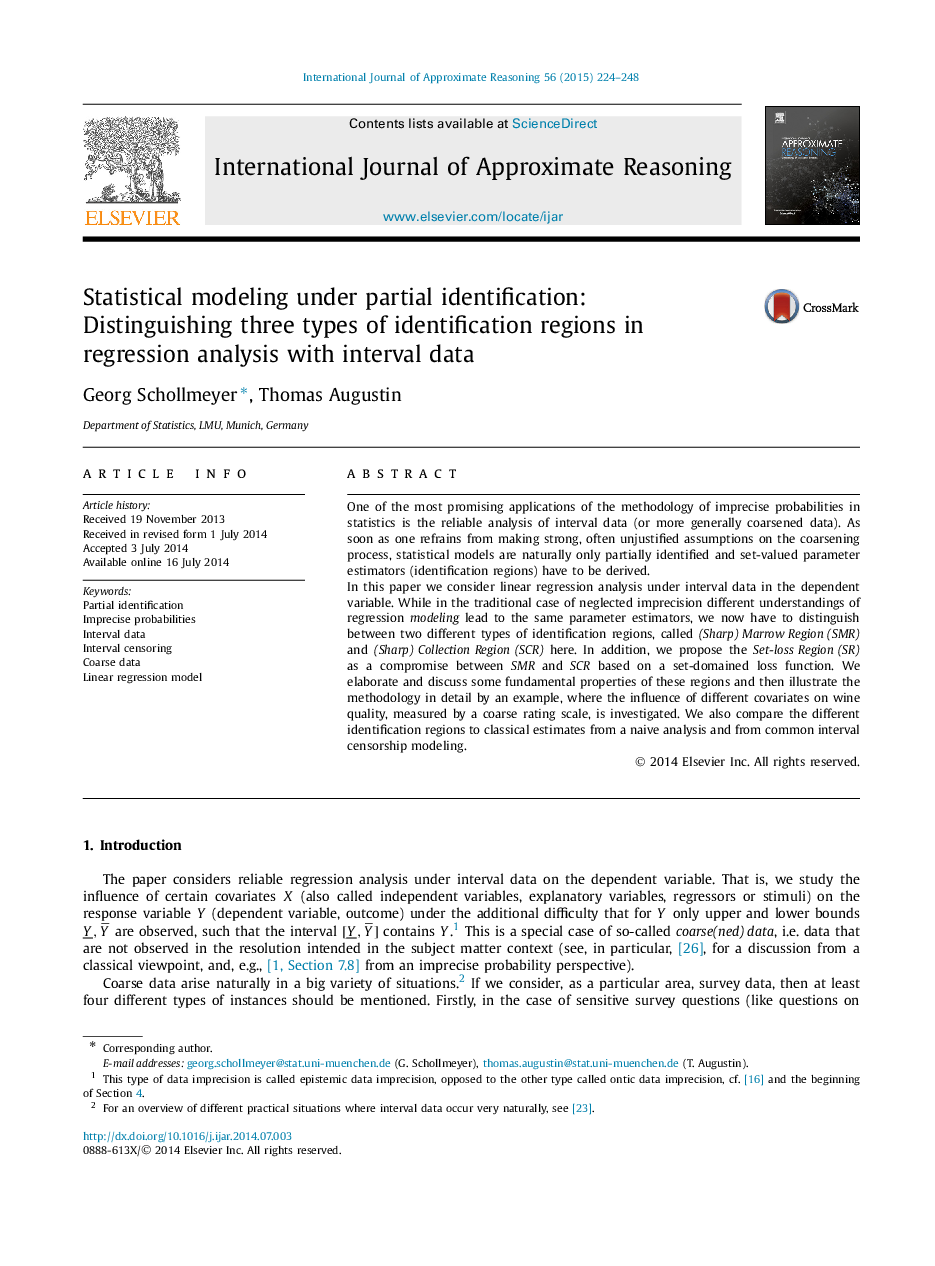| Article ID | Journal | Published Year | Pages | File Type |
|---|---|---|---|---|
| 397303 | International Journal of Approximate Reasoning | 2015 | 25 Pages |
•We distinguish and elaborate different types of Identification regions.•We introduce a rigorous set-based Identification Region.•We carefully investigate the used concepts in a detailed application example.•We compare the concepts with classical procedures.•We make clear the crucial role of the exact presumed assumptions.
One of the most promising applications of the methodology of imprecise probabilities in statistics is the reliable analysis of interval data (or more generally coarsened data). As soon as one refrains from making strong, often unjustified assumptions on the coarsening process, statistical models are naturally only partially identified and set-valued parameter estimators (identification regions) have to be derived.In this paper we consider linear regression analysis under interval data in the dependent variable. While in the traditional case of neglected imprecision different understandings of regression modeling lead to the same parameter estimators, we now have to distinguish between two different types of identification regions, called (Sharp) Marrow Region (SMR) and (Sharp) Collection Region (SCR) here. In addition, we propose the Set-loss Region (SR) as a compromise between SMR and SCR based on a set-domained loss function. We elaborate and discuss some fundamental properties of these regions and then illustrate the methodology in detail by an example, where the influence of different covariates on wine quality, measured by a coarse rating scale, is investigated. We also compare the different identification regions to classical estimates from a naive analysis and from common interval censorship modeling.
